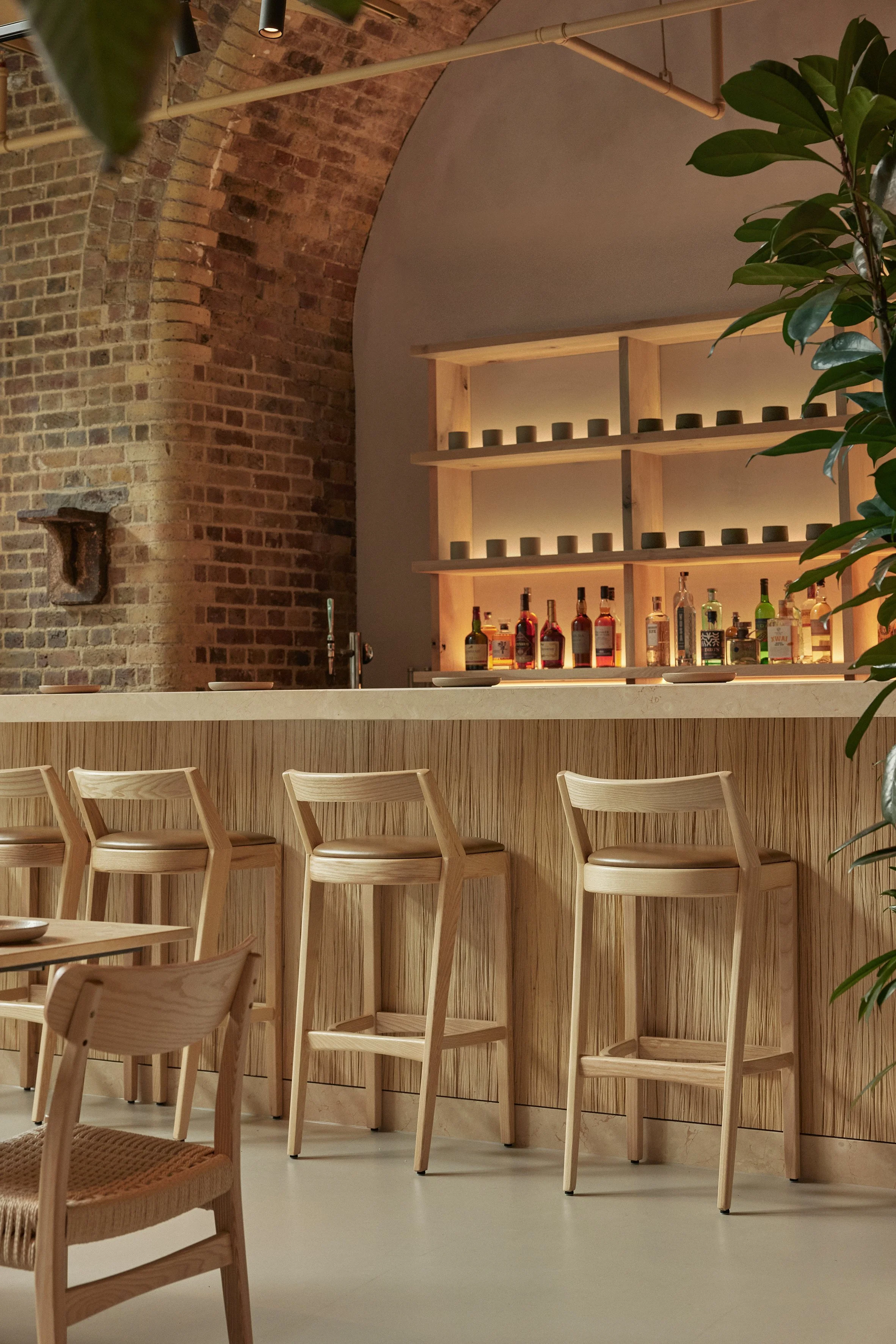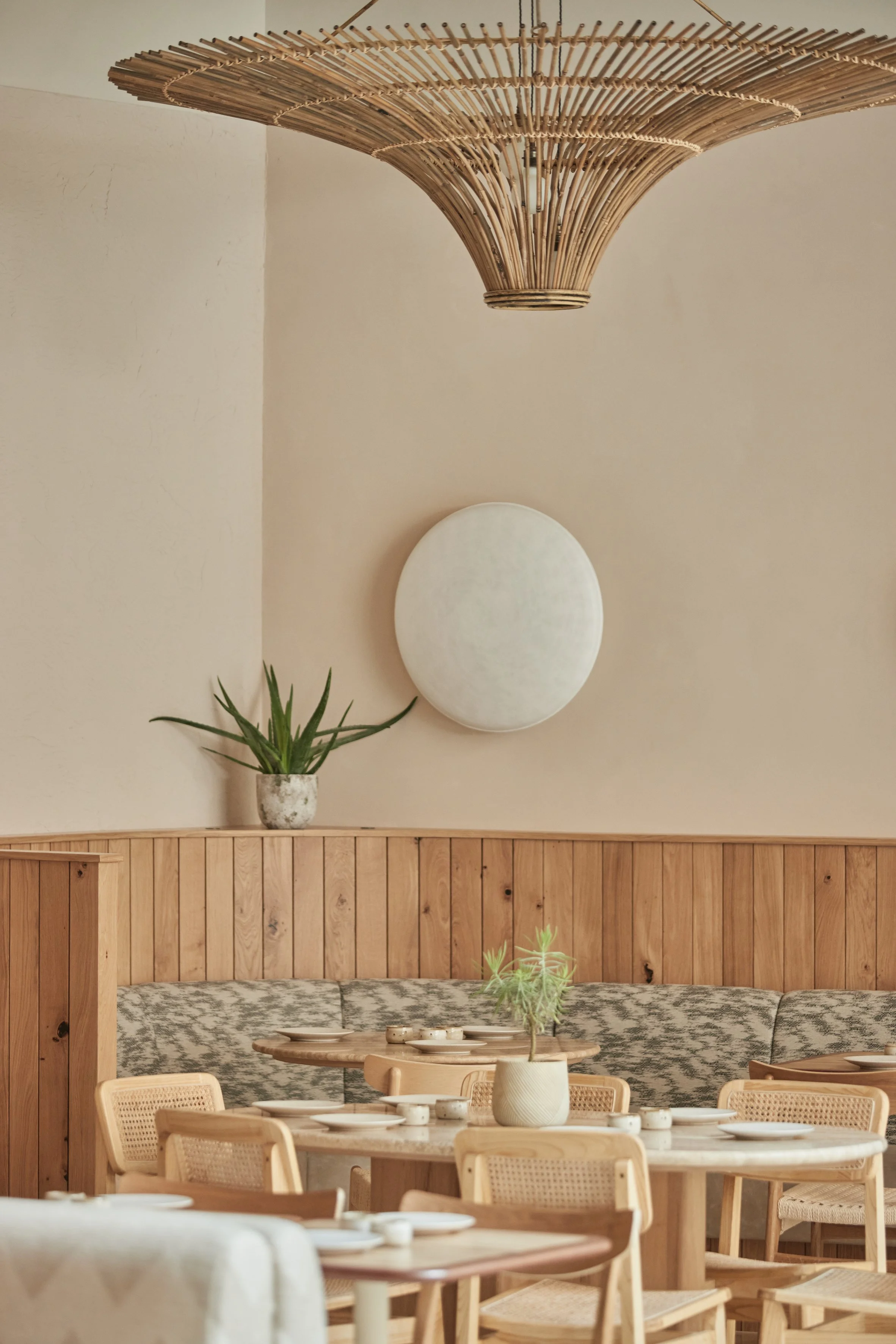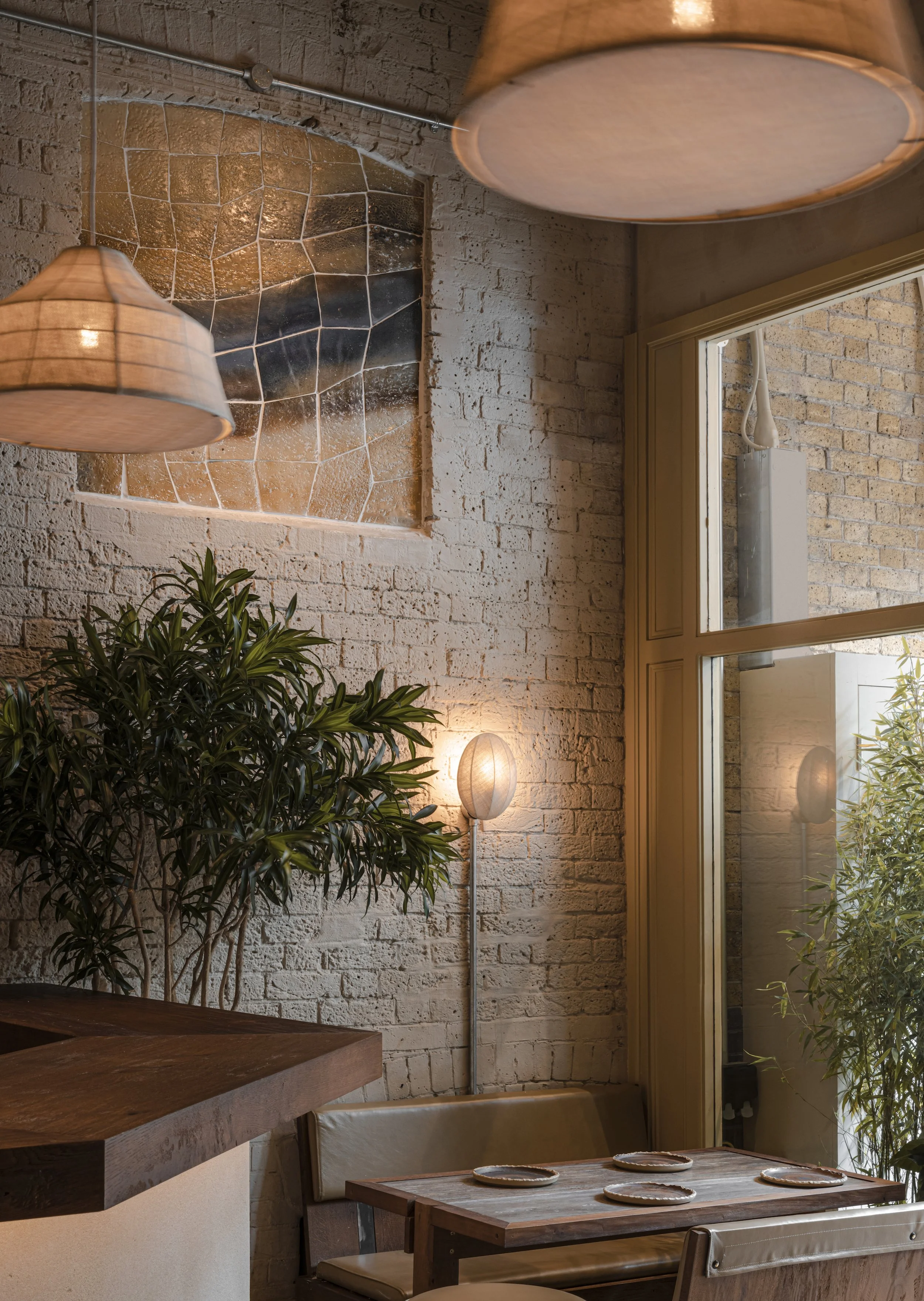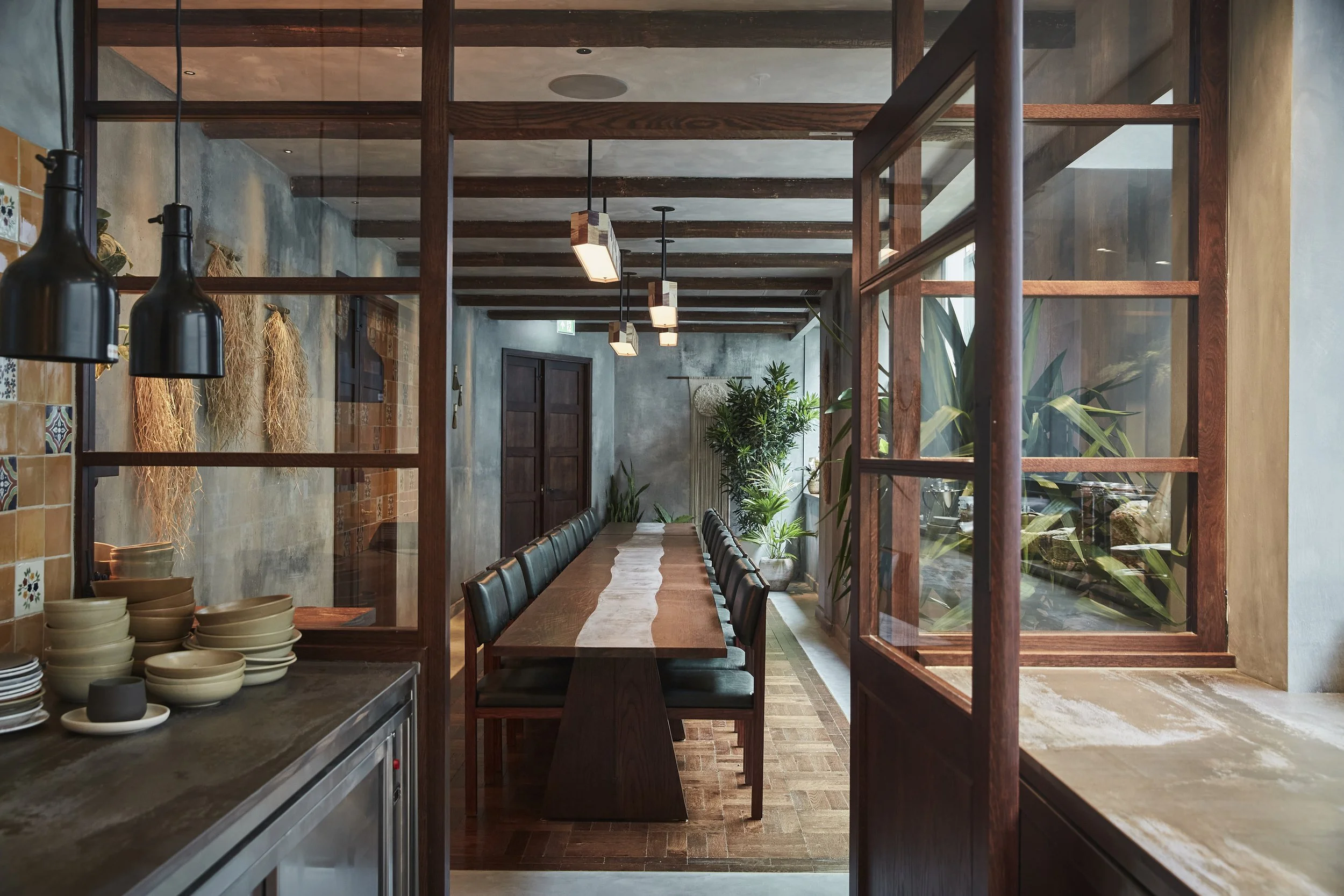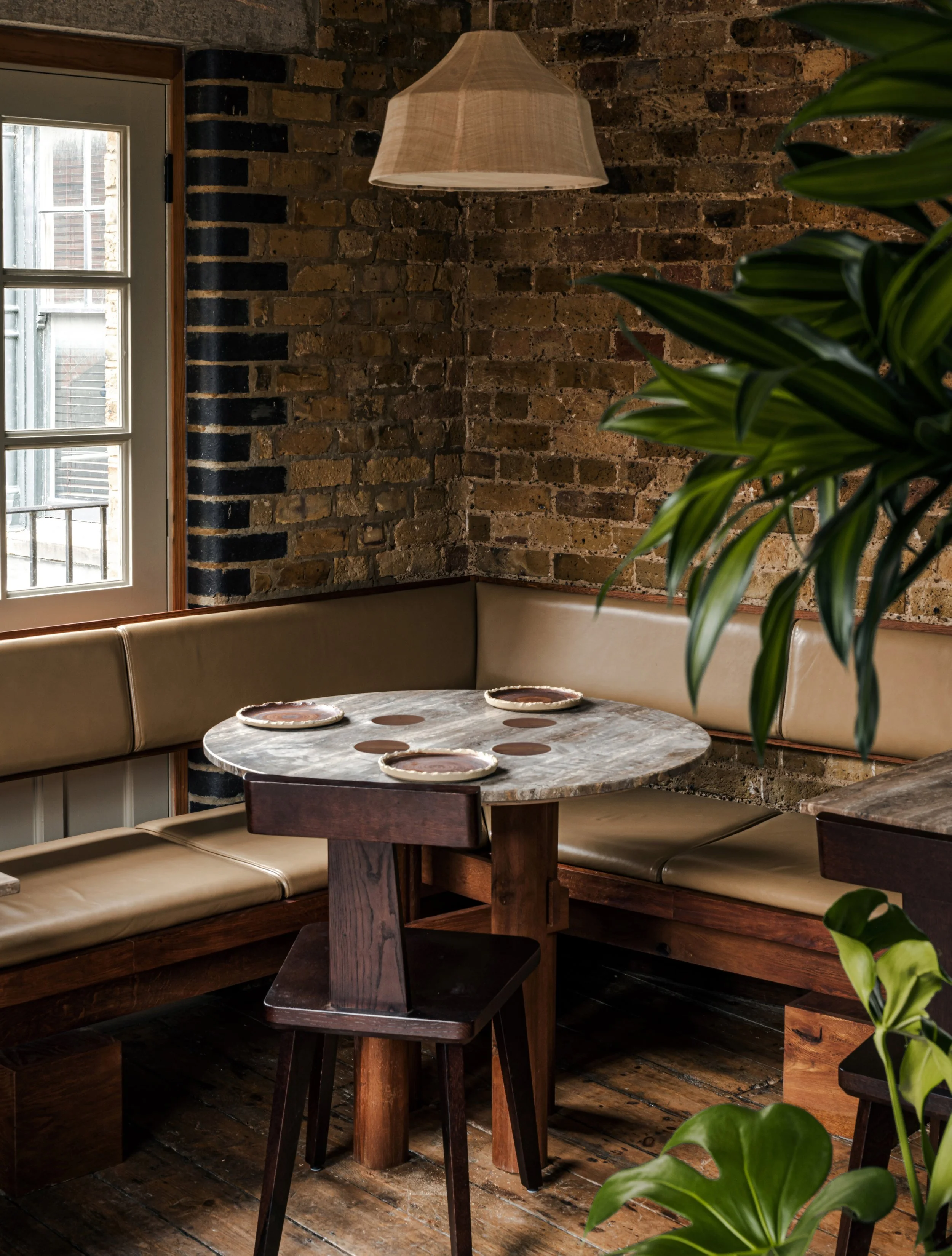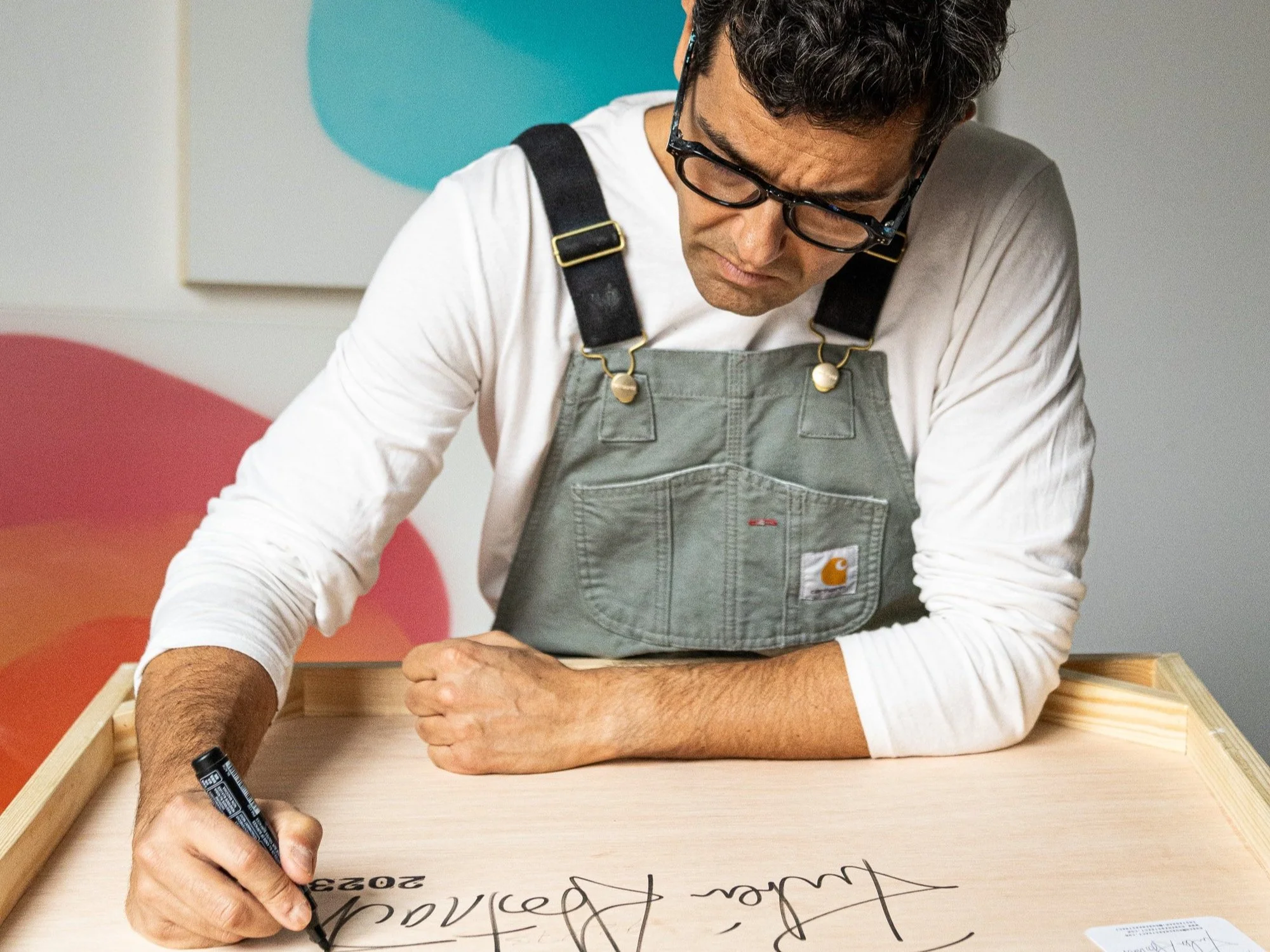Grounded in Craft: The Story of A-nrd's Rise in Commercial Interiors
people • designers
A-nrd Studio is an award-winning studio specialising in interior and furniture design, known for crafting effortlessly inviting and familiar spaces. Established in 2015 by Alessio Nardi, alongside creative partner Lukas Persakovas, this dynamic duo combines extensive expertise in global interior and furniture design. Their portfolio includes collaborations with renowned designers such as Lee Broom and Tord Boontje, as well as projects for prestigious clients like Galleries Lafayette and Bloomingdale's.
WEBSITE: a-nrd.com INSTAGRAM: @a_nrdstudio
Words: designeers
September 2024
designeers
How did you get started in interior and furniture design?
a-nrd
Alessio: Before founding A-nrd I worked on the set of Peter Saville’s exhibition 'Happy Endings' at Morph studio before moving on to Tord Boontje. My role after that was with designer Lee Broom working on interior projects including the Christian Louboutin store at Harrods. I left Lee Broom to start my own practise but freelanced for a short while at Uxus, a global retail design brand agency in Amsterdam where I met Lukas and worked together on the launch of Bloomingdales Kuwait.
Lukas: After graduating I worked at a local company in my hometown of Vilnius which produced the commercial fixtures and fittings for many luxury brands including Dior. It opened a lot of doors in Europe and allowed me to work on large-scale retail projects including Tate Modern’s retail store and Galleries Lafayette Beijing.
Alessio: Working together, we have been able to quickly grow the studio over the last few years. We recognised a niche in the market for commercial interiors that told authentic and design-led narratives and in which unique and bespoke furniture and lighting could be incorporated and that’s where our success lies.
designeers
Your work has a wonderfully grounded and organic feel, how would you describe your signature style in your own words:
a-nrd
Alessio: Our approach is defined by conceptual associations, subtle references, and reinterpretations. Each interior we create depends on the client and the brief, but I would say that soft minimalism and a sense of effortlessness is a common thread with our projects created by a rich material palette and tonal nuances alongside a strong bespoke element.
designeers
One design principle or mantra you always adhere to:
a-nrd
Alessio: Both Lukas and I really enjoy clever straightforward design. If the interior or the furniture, lighting etc. feels over designed we usually start re-thinking to find a better solution that is simple yet innovative and surprising.
designeers
What are your favourite materials to work with and why? Do you experiment with different materials when designing products?
a-nrd
Lukas: We love finding new and innovative materials to incorporate into projects. We always seek out eco-friendly and sustainable material options, but it can be a challenge sometimes in commercial projects to be fully sustainable, often due to budget, but we try wherever possible to push our clients, suppliers, and contractors to do so.
Alessio: We use a lot of textiles made from recycled materials, recycled glass, artisanal ceramic tiles, hand carved timber and I would say that natural stones such as marble and terrazzo feature heavily in our projects. I’m originally from the Northern part of Italy between Milan and Lake Como where lots of joinery and manufacturing companies are from. Growing up, large furniture retailers such as Ikea and so forth, weren’t very popular in Italy and most people relied on local makers to furnish their house, crafting from new with amazing skill or upcycling. I also spent many summers in a rural village not far from the Apuane mountains, famous of course for its Carrara marble. Both of those things helped foster my appreciation for materiality and craft.
Lukas: My dad is an established jewellery designer and maker, and he would allow me into his studio to work side by side, teaching me intricate skills and the value of attention to detail. My mother is an accomplished seamstress who worked with leather. She taught me to sew and made me aware of fashion and decoration. From them I learnt to appreciate materials we can craft and manipulate to create something new and bespoke.
Alessio: As a result, you will see within our concepts that we love to use vintage pieces, stone masons, bespoke hand-crafted pieces of lighting and furniture, and to collaborate with other up-and-coming makers and artists.
“Our approach is defined by conceptual associations, subtle references, and reinterpretations.”
a-nrd
designeers
A city or place that consistently fuels your creativity and why it resonates with you:
a-nrd
Alessio: For me it is the city I’m lucky to call home, London with its myriad of galleries, museums, book stores and so forth. It’s the perfect combination between culture and nature, you can get very energised walking around in central London and then you can switch of and lose yourself walking or cycling out in Hackney Marshes and be completely disconnected from the urban environment.
Lukas: Although it may not be the usual answer, New York is the city I return to the most. Each time I go back, there are so many new parks and architectural spots to explore. A dedicated day to art galleries will never disappoint, especially with the recent trend to exhibit artisan furniture.
designeers
On your coffee table right now:
a-nrd
Alessio: A large felt bush plant from a cutting I took in Marrakesh a few years ago, a slab of Rosso Levanto marble to put cups on, some rocks collected from travels, “Houses Architects Live In” a 1978 book by Barbara Plumb and Cleanness by Garth Grenwell.
Lukas: A bottle for water, an Artemide lamp, a sketchbook with pencil, and a pile of books which I have just finished reading or am halfway through (at the moment - Tomorrow, and Tomorrow, and Tomorrow by Gabriel Zevin; The Next 100 Years by George Friedman, Stoner by John Williams, Prophet Song by Paul Lynch).
designeers
Can you tell us more about the recent refurbishment of your first hotel project, the Birch Selsdon?
a-nrd
Birch is a brand with a focus on sustainability and creating spaces where people can reconnect with nature, so the brief was to create a very calming home-away-from-home environment for local members and far away guests to enjoy respite from the buzz of the city whether it be for a few hours or a few days. We began to craft the idea of bringing the outside in. Birch Selsdon is set within a huge 200-acre estate which is being rewilded. We wanted to bring that connection to nature, that calmness and sense of tranquillity indoors so that guests feel instantly at ease and relaxed as they transition into the hotel and throughout all areas. This was achieved through our material and colour palette which also nods to the building’s Victorian heritage.
The approach to the design was restorative with loose furniture and items complementing the existing architecture instead of overbuilding - in line with our studio values. We repurposed where possible and made good, and with the new furniture and accessories, we purposely chose a mix of recycled fabrics, vintage furniture and lighting, a carbon negative light cork floor, artwork and marquetry which utilised off cuts and of course furniture made from wood from the estate’s rewilding project.
We wanted to inject a contemporary layer to the estate which was visible through the bespoke items we designed such as the free form booth seating in the Orangery or the deconstructed wardrobes in guest rooms. This was also achieved through the bold colour choices we made to brush off the staleness of the previous refurbishment, from the vivid sage green tones of the Orangery to the warm peachy hues of Vervain, the All-Day restaurant, and the deep blue of the Snug; every room had its own character interlinked by a distinct design language, colour palette and materiality.
Birch Selsdon was both our first hotel project and our largest project to date and we’re very proud of it and the industry and media recognition that it received. We designed communal areas including the lobby, Orangery, the Meadow Bar, Vervain - the all-day restaurant, the Snug, The Hive Co-Working Space, meeting rooms and all 181 bedrooms and suites.
designeers
How do you stay innovative within the interior design industry whilst maintaining authenticity to your brand and style; are there any recent projects where you have pushed boundaries?
a-nrd
Lukas: I think in our profession it is key to always have a finger on the pulse and to be aware, or ahead of new materials, new makers and artists that can bring something new and unexpected to a project within our sustainable approach to interior design.
Alessio: Birch was definitely the most obvious one, because of its scale and the alignment with Birch’s brand ethos. Our new opening Fonda is also a great example as we had to extensively research new Mexican designers and makers in order to bring to the project unique and exciting creations. We have had some beautiful bespoke pieces commissioned which we are very excited to reveal later in September.
designeers
Favourite hotel in the world:
a-nrd
Alessio: I’m not one to do rankings but I really enjoyed Ypseli Anafi's Hive, a little 9-bedroom hotel in the remote island of Anafi in Greece. I recently visited and I find this kind of “micro” hotel with not many rooms, often offering the best service and experience and Ypseli was the proof. You can juggle between the room, the pool and the local beach without any stress. The staff know your name and after few days they get to know what you like and make your stay extremely smooth.
Lukas: I am always excited to see new Ace Hotel projects, and appreciate the evening energy they manage to give, not just for visitors but also for locals.
designeers
Design hero?
a-nrd
Alessio: Ezio Manzini from my Politecnico years in Milan. Many of my professors were great source of aspiration, but Ezio Manzini in particular was a great mentor and pioneer in design for social innovation and sustainability. That influence has followed through into the values of our studio.
Lukas: As my design aesthetic changes, so do the heroes, I won't name them, but I'm happy to see the direction of many influential designers who are turning to natural materials and, in my opinion, a more timeless direction.




